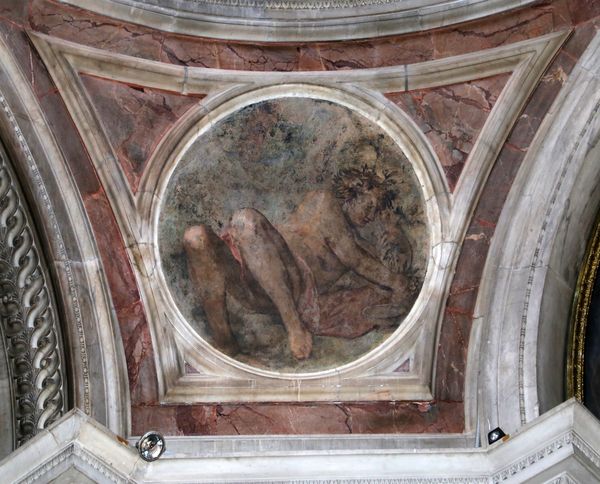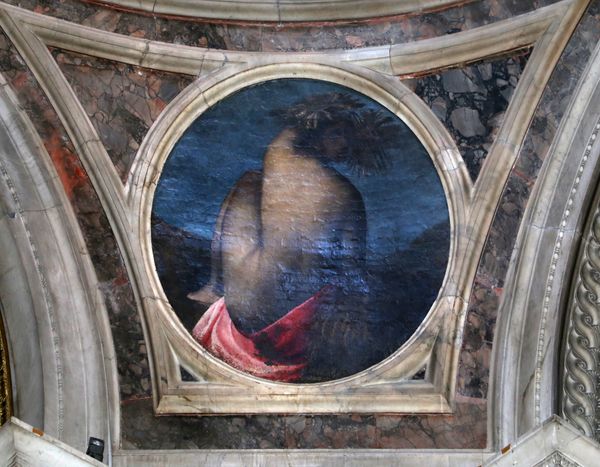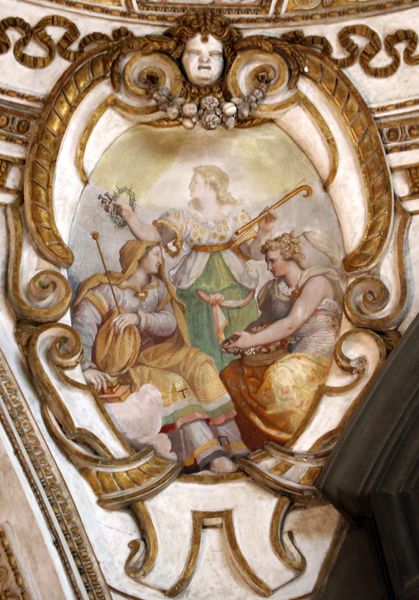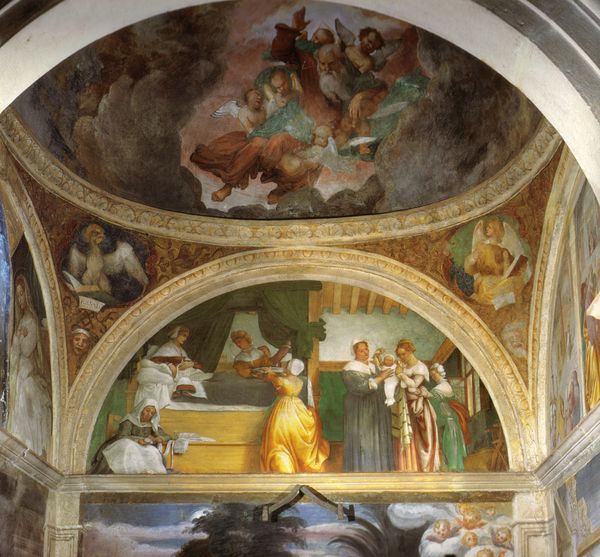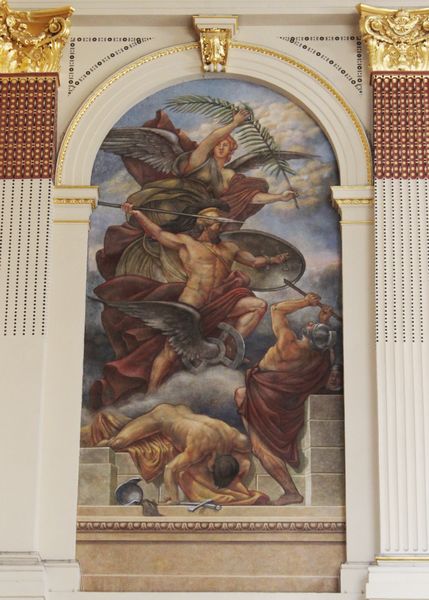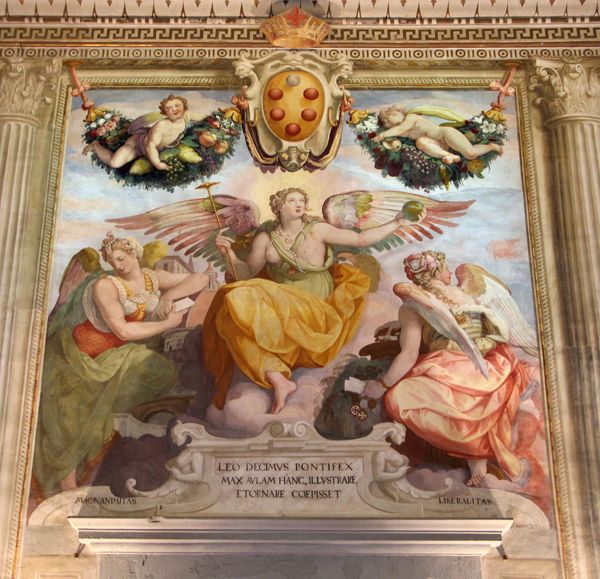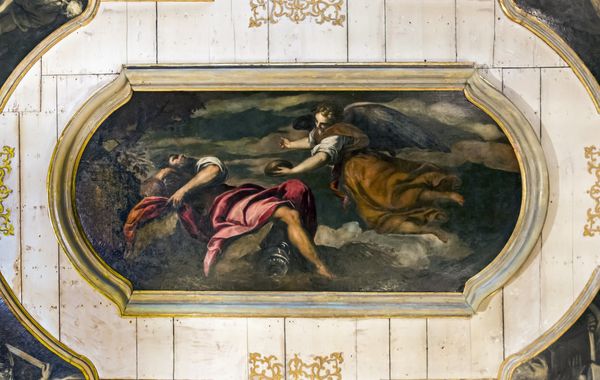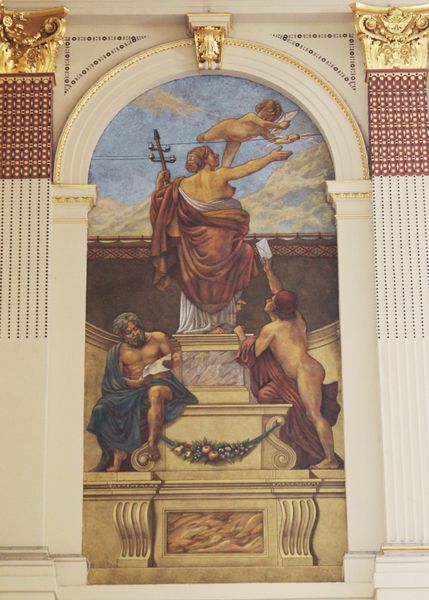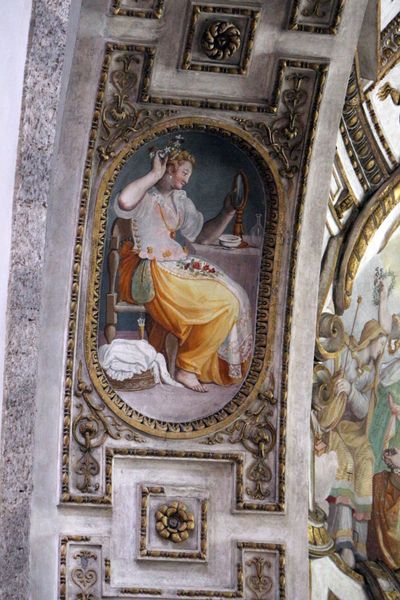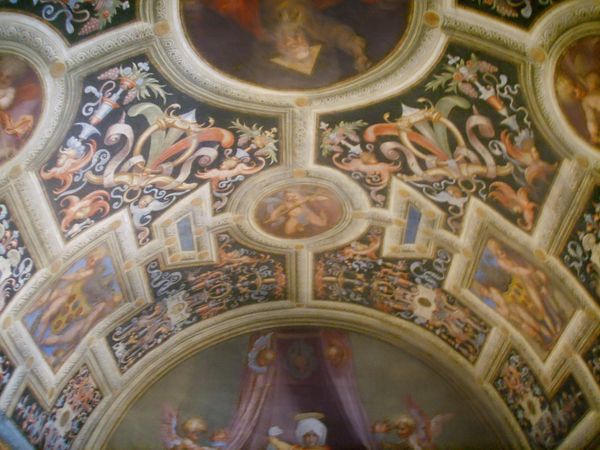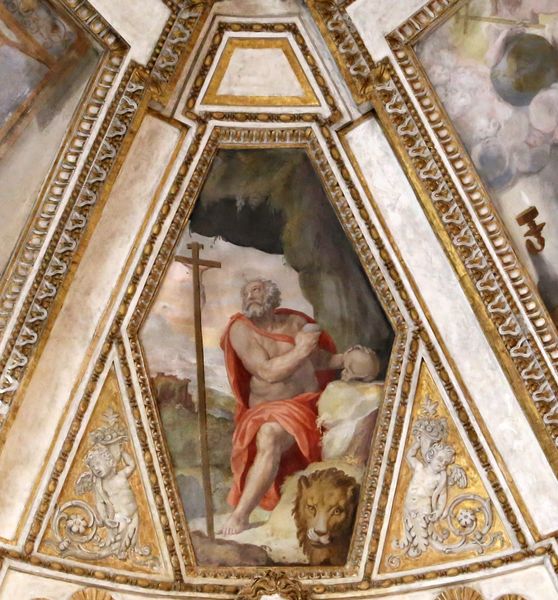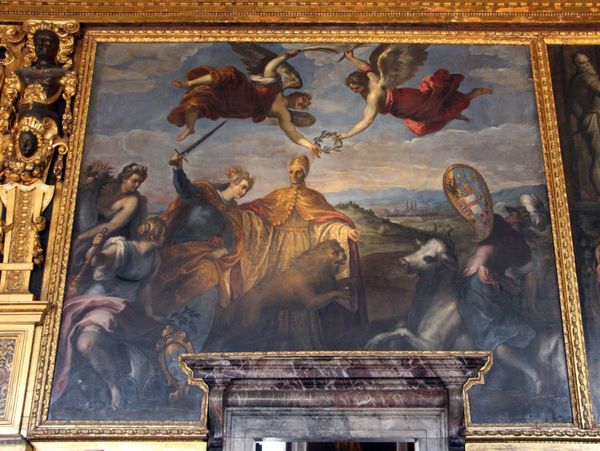
painting, fresco, photography, architecture
#
allegory
#
painting
#
landscape
#
historic architecture
#
fresco
#
traditional architecture
#
photography
#
architecture
#
italian-renaissance
#
nude
#
architecture
Copyright: Public domain
Francesco Salviati painted Spring in the 16th century, using oil on canvas. The smoothness and sheen of the finished painting belie the labor intensive process of its creation. Consider the ground layer that prepares the canvas, or the careful layering of pigments to achieve the subtle gradations of flesh tones, and the precise folds of the drapery. The artist’s hand is evident in every brushstroke, and the knowledge of human anatomy. Salviati would have also relied on assistants, who would have mixed paints and prepared canvases. The very act of painting with oil, a relatively new medium at the time, demonstrates the evolving technical sophistication. It allowed for the complex modeling of forms and a sense of volume that was highly prized during the Renaissance. Looking at this artwork, we can appreciate the value of materials, making, and social context. These factors help us move beyond traditional distinctions between fine art and craft, allowing for a deeper understanding of its meaning.
Comments
No comments
Be the first to comment and join the conversation on the ultimate creative platform.
